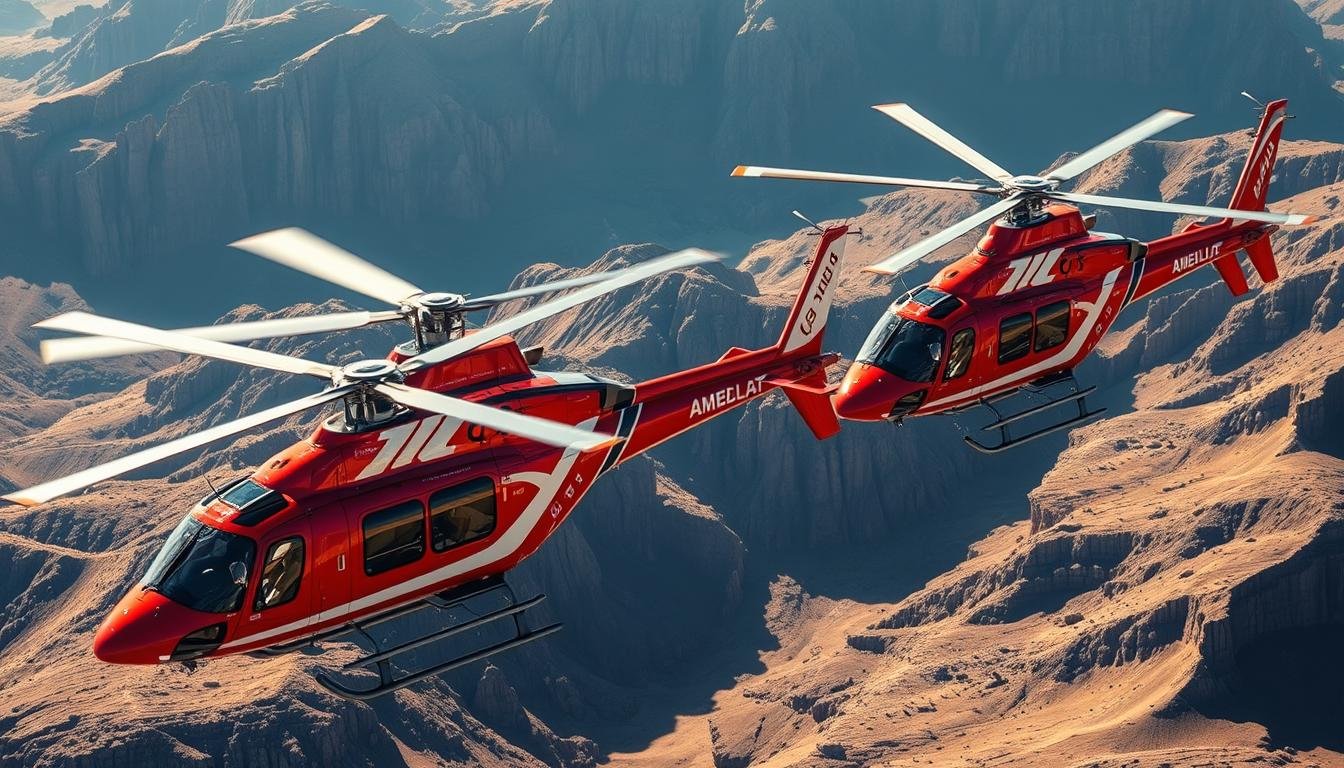Air Ambulance Helicopters once operated more than 150 bases across 15 states, with crews ready seven days a week.
That network sent roughly 84% of its transports from rural areas, showing how vital rapid air medical response had become for remote communities.
Providers like Air Evac Lifeteam and REACH Air Medical Services stood as a quick link between far‑off scenes and advanced hospitals in the United States.
The piece explained how 24/7 readiness, integrated clinical protocols, and tight ground coordination reduced time to critical care.
It also offered a Service Directory to help families and decision‑makers compare coverage, base locations, and mission models.
Readers saw why mission‑focused operations and trained crews raised survival odds for trauma, cardiac, stroke, and other emergencies.
For background on how rural hospital closures shaped demand, the article referenced regional reporting and provider analysis via authoritative sources.
Learn more about rural system impacts at rural hospital trends and provider models at air medical service overview.
Key Takeaways
- Rapid Reach: Aircraft linked remote scenes to hospitals within critical time windows.
- Rural Focus: Most transports and bases served small communities.
- 24/7 Readiness: Crews and protocols supported continuous emergency response.
- Integrated Care: Clinical standards and aviation rules improved reliability.
- Decision Tools: A service directory helped families compare coverage and access.
Air Ambulance Helicopters In Rural Emergency Medical Transport
In remote counties, rapid aviation-based transport became the bridge to high-level hospital care. Providers leaned on strategic base placement and continuous staffing to cut delays that once cost critical minutes.
Rapid Medical Transport And Time‑Critical Patient Care
When seconds mattered, Air Evac Lifeteam reported about 84% of transports began in rural areas, with over 90% of aircraft based nearby. Rapid medical transport shortened scene-to-hospital intervals so patients reached definitive care faster.
Flight Crews, Fleet Readiness, And Rural Base Coverage
Each standard crew combined a pilot, a flight nurse, and a flight paramedic on duty seven days a week. That model supported advanced airway care, medication delivery, and continuous monitoring during transit.
- Fleet readiness depended on preventive maintenance and weather planning.
- Dispatch protocols tied local EMS to activation criteria and faster handoffs.
- Interfacility transport moved higher‑acuity cases to trauma and specialty centers efficiently.
| Provider | Rural Base Share | Crew Composition | Primary Capability |
|---|---|---|---|
| Air Evac Lifeteam | 90%+ | Pilot, Flight Nurse, Flight Paramedic | Scene & Interfacility Transport |
| REACH Air Medical Services | Regional (Western U.S.) | Pilot, ICU‑trained Clinicians | ICU‑Level Care Aboard Aircraft |
| System Benefits | Strategic Bases | 24/7 Staffing | Reduced Time To Treatment |
“WHEN SECONDS COUNT.”
For operational context and comparisons, see a discussion on rural roles in flight response at how helicopters are reshaping emergency healthcare and a primer on modality choice at helicopters vs ground transport.
Service Directory: Air Ambulance Helicopters Across The United States
An organized directory helps hospitals, providers, and families compare coverage across the united states. It highlights where bases sit, what each fleet can do, and how teams deploy during a moment of need.

Air Evac Lifeteam: 150+ Helicopter Bases And Rural Access To Care
Air Evac Lifeteam operated more than 150 helicopter air ambulance bases across 15 states. The model placed over 90% of aircraft in rural communities to shorten time to higher levels of care for patients.
Air Evac Lifeteam Crews: Pilot, Flight Nurse, And Flight Paramedic On Duty Seven Days A Week
Standard crews included a pilot, a flight nurse, and a flight paramedic. That staffing supported advanced interventions on every flight and consistent ambulance operations seven days a week.
REACH Air Medical Services: Western U.S. Critical Care Transport
REACH maintained more than 50 bases across five western states and focused on ICU-level transport for complex patients. A Northern Nevada helicopter added wildfire support in partnership with forestry and local fire agencies.
REACH Fleet Capabilities: ICU‑Level Care And Multi‑Mission Operations
The fleet combined fixed and rotary aircraft to meet regional needs. Users consult the directory to compare mission profiles, crew mix, and response times.
Operational Updates And Community Communications
Missoula‑based crew involved in a late‑night accident near Lincoln, Montana; no patient on board and no injuries were reported.
| Provider | Bases | Crew | Primary Capability |
|---|---|---|---|
| Air Evac Lifeteam | 150+ (15 states) | Pilot, Flight Nurse, Flight Paramedic | Rural Access & Rapid Transport |
| REACH Air Medical Services | 50+ (Western U.S.) | Pilot, ICU‑Trained Clinicians | ICU‑Level Care, Wildfire Support |
| Directory Value | Nationwide Listings | Standardized Teams | Compare Fleet, Bases, Response |
Safety, Accreditation, Membership, And Careers In Air Medical Transport
Rigorous standards and continual training drove measurable gains in patient safety and readiness. REACH held CAMTS accreditation and completed a site survey August 12–15, 2024, meeting the three‑year review cycle. CAMTS accreditation validated adherence to formal air medical transport standards and clinical governance.

CAMTS Accreditation And Zero‑Defect Safety Initiatives
Accredited programs supported safety management systems and continuous quality improvement. Zero‑defect initiatives encouraged proactive risk ID, a just culture, and recurrent drills for each crew and support staff.
Membership Options For Patients And Communities
Both Air Evac Lifeteam and REACH advertised fast, easy enrollment for members. Memberships offered predictable financial protection and streamlined access to emergency service, helping families secure benefits before a need arose. Learn more about accreditation and member value through the CAMTS accreditation overview.
Careers: Flight Paramedics, Flight Nurses, Pilots, And Support Teams
Career paths ranged from flight paramedic and flight nurse to pilot, maintenance technician, and communications specialist. Organizations invested in scenario‑based training, preflight briefings, and post‑mission debriefs to build a high‑reliability team.
“Pilot Fred Finnell reached 4,000 patient flights, a milestone that reflects deep institutional experience.”
Conclusion
Mapping bases and fleet capabilities made it easier to close gaps in emergency response and interfacility transport. , The directory showed how coordinated air medical systems shortened time to definitive care and raised survival odds for a patient in remote regions.
Stakeholders used the listings to match clinical goals with the right partner, ensuring continuous care during medical transport. Leading providers combined disciplined flight operations, trained teams, and standardized protocols to deliver reliable ICU‑level care in transit.
Rural communities gained earlier intervention when transportation barriers fell. Readers can review a key study on transfers, a cost and outcomes analysis, and a primer on how helicopters revolutionized emergency care to plan service, membership, and investment decisions.
FAQ
What role do air medical helicopters play in rural emergency medical transport?
They provide rapid medical transport for time‑critical patients in areas with limited hospital access. Crews specialize in stabilizing trauma, cardiac, and stroke patients while en route, reducing transfer times to definitive care and extending advanced treatments to remote communities.
How quickly can a flight team reach a patient in a rural area?
Response varies by location and weather, but well‑positioned bases and ready crews allow many programs to launch within minutes. Faster transport cuts the time to specialty care, improving outcomes for injuries and acute medical events.
Who makes up the flight crew on these missions?
Typical crews include a pilot, a flight nurse, and a flight paramedic. Each member trains for critical care, aviation safety, and rapid scene assessment to deliver advanced interventions during transport.
How do organizations maintain fleet readiness and rural base coverage?
Operators use scheduled maintenance, trained technicians, and staggered shifts to keep aircraft available. Strategic placement of bases increases coverage, and partnerships with hospitals and first responders support coordinated missions.
Where can patients find service providers across the United States?
Providers publish service directories and base locations online. Regional programs and national operators list coverage maps, contact information, and transfer protocols to help hospitals and emergency services arrange transport.
What capabilities do large regional operators offer for critical care transport?
Many fleets provide ICU‑level care, ventilator support, and advanced monitoring. Multi‑mission platforms handle scene response, interfacility transfers, and neonatal or pediatric transports, adapting equipment and staffing to patient needs.
How do operators keep communities informed about operational updates?
They use websites, social media, local outreach, and coordination with hospitals and emergency management. Regular updates cover service area changes, safety campaigns, and community education on when to request transport.
What safety standards and accreditations apply to air medical services?
Leading programs pursue CAMTS accreditation and implement rigorous safety management systems. Initiatives focus on maintenance, pilot training, clinical protocols, and a culture that aims for zero defects in transport operations.
Are membership plans available to cover transport costs for patients?
Yes. Many services offer membership options that reduce or eliminate out‑of‑pocket expenses for eligible transports. Memberships typically cover emergency flights and provide priority coordination during critical incidents.
What career paths exist within the air medical transport industry?
Open roles include flight paramedics, flight nurses, pilots, mechanics, and operations coordinators. Employers value critical‑care experience, aviation certifications, and continued training in both medical and safety disciplines.nue to grow.
Related Articles
- The Importance of Air Ambulance Helicopters in Rural Healthcare
- How Helicopters Help in Remote Area Rescue Missions
- Challenges Faced by Helicopter Pilots in Emergency Operations
- Helicopter Technology Advancements Improving Emergency Response
More from This Category
- Helicopters in Natural Disaster Relief: Saving Lives from Above
- A Day in the Life of an EMS Helicopter Pilot
- Top Helicopter Models Used in Emergency Medical Services (EMS)
- Helicopters vs. Ground Ambulances: When Air Transport is Critical
- How Helicopters Have Transformed Search and Rescue Operations
- The Role of Helicopters in Modern Emergency Medical Services (EMS)



